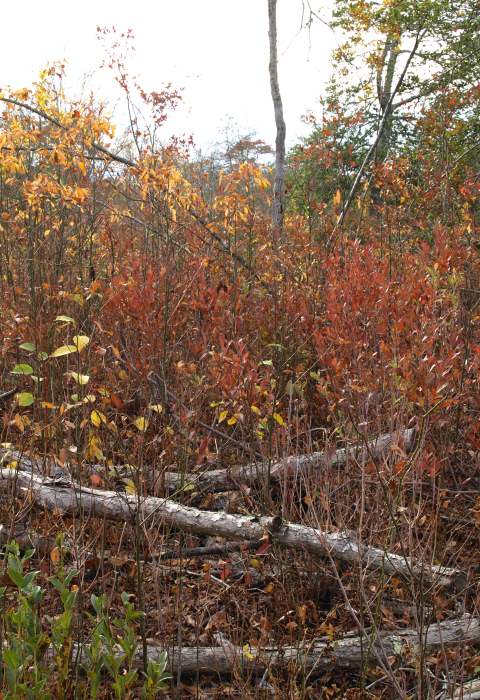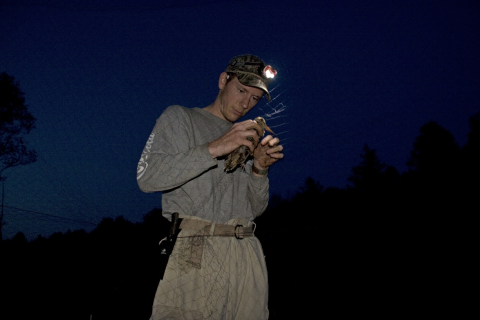State Wildlife Management Area Project
Since 1995, the Rhode Island Department of Environmental Management (RIDEM) has done a series of linked timber harvests to increase diversity of forest age classes and tree species on 3,600-acre Great Swamp WMA in southern Rhode Island.
Early Successional Habitat Breaks Up the Sameness
Most of the upland areas on the WMA are cloaked with 60- to 100-year-old woods – good habitat for some wildlife species but less useful for others. Timber harvests in 1995, 2007, 2012, and 2017 created around 80 acres of young forest and shrubland. The next cut will take place in 2024 or 2025.
Birds can quickly access areas of regrowing young trees through their flight. Land animals need a different approach, so conservationists located habitat sites next to one another and close to a brushy 100-foot-wide powerline corridor that wildlife can use to move about without being seen by predators.
American Holly Helps Songbirds
American holly is a small tree that flourishes when timber-felling operations remove taller trees that are shading it. In late summer and early fall, birds feed on the trees’ fruits, building up body fat for their southward migration.
Woodcock also use the young forest. Males sing and conduct dawn and dusk display flights above recently cut areas and in nearby fields, and females use regrowing forest of different ages to nest and to rear young.
RIDEM biologists and researchers from the University of Rhode Island have captured woodcock on the site, attached radio-location devices to them, and studied how the birds use the habitat. They discovered that some woodcock on the WMA flew as far as one mile to feed in floodplain forests of nearby rivers.
Studying a Rare Rabbit
Since 2016, New England cottontails produced through conservation breeding have periodically been released into the young forest habitat area. Researchers monitor the rabbits using radio telemetry and by collecting scat (droppings), from which genetic and population information can be derived. Says RIDEM biologist Dylan Ferreira: “We’ve documented new offspring born in the young forest habitat. The timber harvest slated for the winter of 2024 is close by, and in coming years it will provide more food and cover for these rare cottontails.”
How to Visit
After passing the RIDEM building at 277 Great Neck Rd., South Kingston, continue on Great Neck Rd. to where it ends in a parking lot. A foot trail beyond a bar gate leads into the WMA. The northern tip of the young forest habitat area is about 2/3 mile along the trail. The trail forks twice along the way; stay to the left at both forks to reach the eastern side of the habitat area. Since trails in this upland portion of the WMA are entirely surrounded by swamp, they all eventually circle around to the same area.




